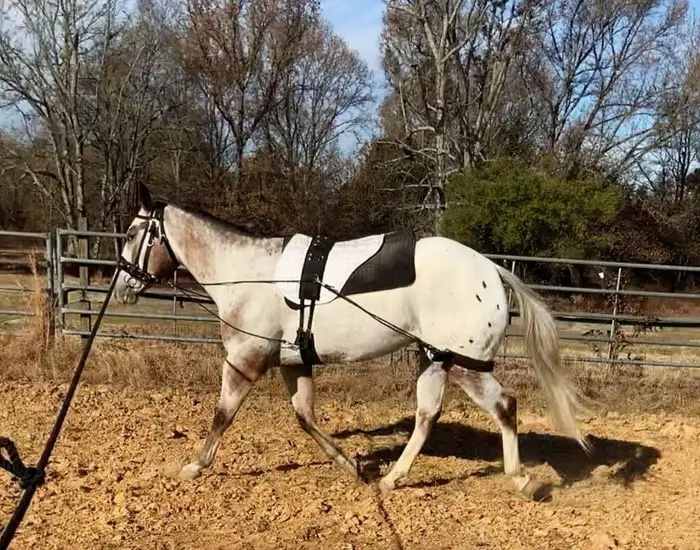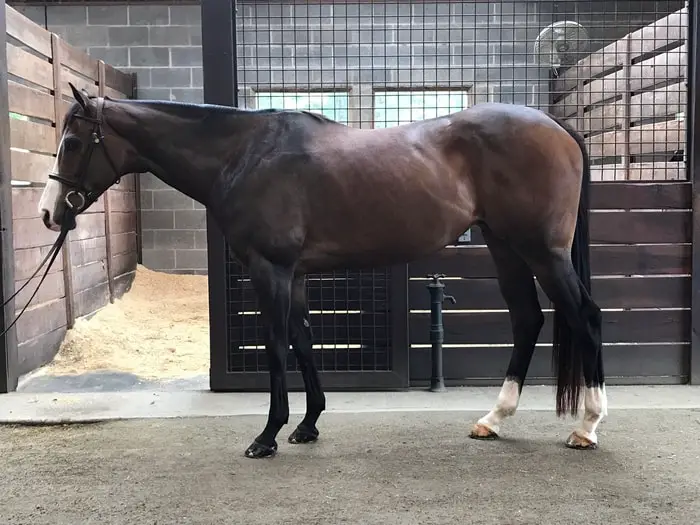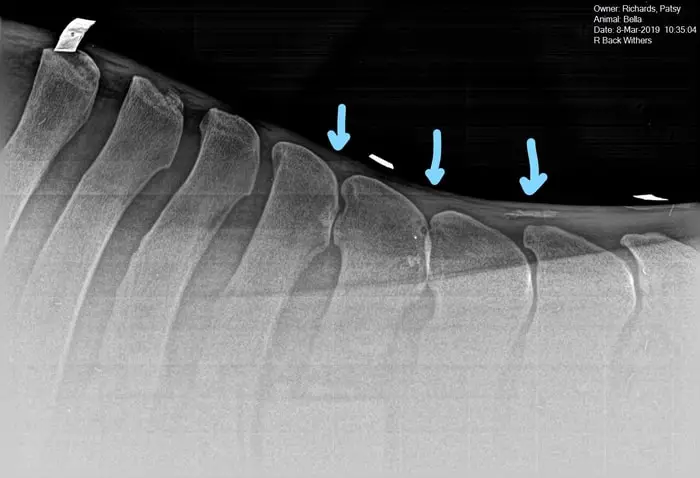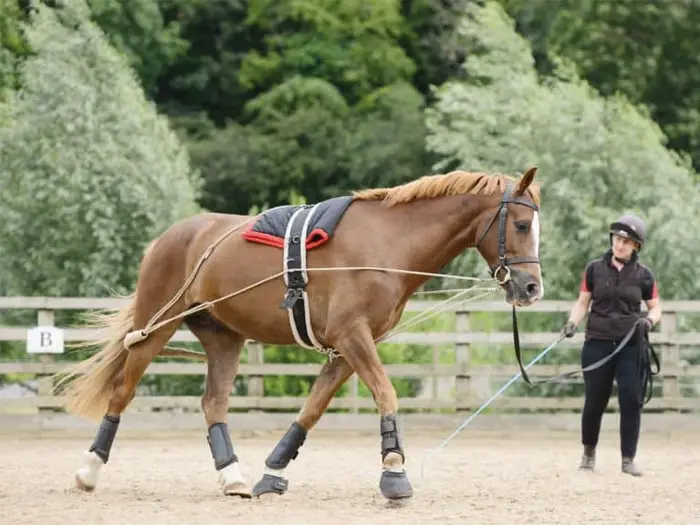Kissing Spines in horses is a slow, degenerative condition of the bones or spines that arise from each vertebral bone of the spinal column of your horse. These bony processes from the withers and the bony bumps you can feel along a horse’s back.
When the bones are too close together, they compress the soft tissue in between, may tear the delicate ligaments that connect adjacent processes, and sometimes even rub together, significantly when your horse jumps, when extra bone will develop like a split and irritate its neighbor, causing pain and inflammation.

Causes of Kissing Spines in Horses
The problem is usually congenital- the horse was born with it. For example- the back is abnormally short or curved, so the spines touch during jumping or galloping, but it may have been caused by an injury or accident.

Kissing Spine Symptoms in Horses
There are different signs of kissing Spines, but they can be non-specific. These may include:
- Feeling discomfort.
- Changes the horse’s normal behavior and temperament.
- An affected horse will have a sore wither and back area that is swelling and painful to the touch.
- Difficult to mount.
- Refusing to standstill.
- Stiffness.
- Reluctance to go forwards.
- Loss of muscle mass.
- The horse may buck, run away, rear, or kick out.
- Your horse sometimes also has a reluctance to roll or lie down.
Diagnosis of Equine Kissing Spine
Your veterinarian helps diagnose your horse’s kissing spine, and then your vet will consider the horse’s history, age, breed, and gender. They take and perform a complete physical examination that is very important to diagnose your horse’s condition. The condition is confirmed by radiographing the withers and back, which will reveal the abnormal position of the spines. This is important because kissing spines is sometimes diagnosed when no other cause of back pain can be found.

Treatment of Kissing Spine in Horses
Initial treatment is medical and consists of introducing corticosteroids by deep injection into the areas of pain. This can be very effective, allowing your horse to resume everyday work. However, it needs to be repeated, and its success is governed by the length of time for which your horse responds to this form of treatment.
Other options are significant for your horse, and your vet recommends controlling the pain and inflammation associated with kissing the spines of your horse.
- Therapeutic ultrasound.
- Shock wave therapy.
- Muscle relaxants.
- Acupuncture.
- Chiropractic.

Equine Kissing Spine Surgery
The surgical option is to remove the spines causing the rubbing; however, only alternate spines are removed.
Prognosis and Outcome of Kissing Spines in Horses
Provided the kissing spines are not related to any other condition, the outcome is usually good, with the horse eventually returning to his original workload. Aftercare and recovery time will depend on how the treatment is progressing. As the horse ages, he may be more likely to become stiff in the back due to scarring.